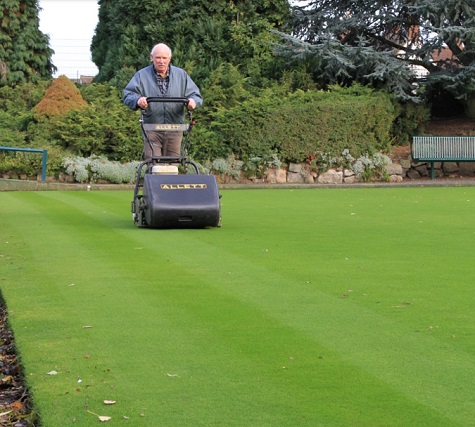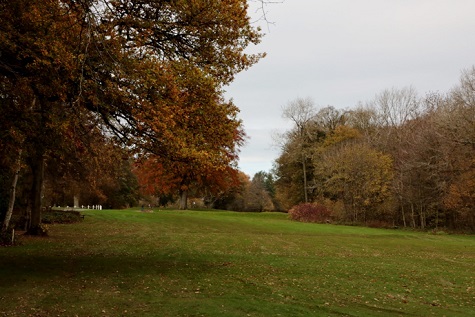The weather this past couple of weeks in terms of soil and air temperatures, plus rainfall, has been dramatic to say the least.
Scotland recorded some of the heaviest rains for many a year, with over 100mm of rain falling in one day. Meanwhile, many other parts of the country experienced above average air temperatures at around 23 degrees (see Mark Hunt's interesting Weather Blog).
This spate of mild weather has encouraged a late flourish of growth, with many lawns and sports facilities needing some additional mowing to keep on top of this autumn growth.

This spell of good weather has also helped many turf professionals and club volunteers get on with their end of season renovations, safe in the knowledge that these warm temperatures will help germinate the new seed they have put down. It certainly is a busy time for bowls and cricket clubs.
As mentioned in my previous blogs, do not skimp on what needs to be done. End of season renovations are a key maintenance task to ensure the playing surface is rejuvenated ready for next year’s play. We now have many quality machines to help us undertake this work. Here are some of my previous end of season renovation articles:

Leaf litter
Over the next few weeks, we will start to see a dramatic increase in leaf litter with many deciduous trees shedding their leaves during October and November.

Trees lose their leaves in the autumn as part of a natural process called "leaf abscission." This process is primarily influenced by changes in environmental conditions, particularly the decreasing amount of daylight and cooler temperatures that occur during the autumn season.
The process of leaf abscission is controlled by hormonal changes within the tree. The hormone auxin, which promotes leaf growth, decreases in concentration as daylight hours shorten. This change triggers the formation of an abscission layer at the base of each leaf petiole (stem). This layer eventually severs the connection between the leaf and the tree.
Overall, the shedding of leaves in autumn is a survival strategy that allows trees to conserve resources, protect themselves from harsh winter conditions, and prepare for a period of dormancy. This process is part of the natural cycle of deciduous trees, which lose their leaves annually and regrow them in the spring when conditions become more favourable.
In the past, the clearing up of leaves was a labour-intensive task. However, we now have a wide range of leaf vacuums and blowers that make the job so much easier. Over the next couple of months, I will be trailing a number of leaf blowers. I recently acquired an EGO LBP8000E backpack leaf blower and I am now waiting for leaves to fall so I can give it a good test.

By late November all leaves should have fallen, and then we will be entering the tree planting season (November-March ). Planting during this period offers several benefits:
Root Growth: During the dormant season, trees focus on root development rather than top growth. Planting during this time allows the tree to establish a strong root system before the hot and dry conditions of summer arrive. This can result in healthier and more robust trees.
Reduced Stress: Trees experience less stress when planted in cooler temperatures. High temperatures and direct sunlight can cause water loss through transpiration, which can be detrimental to newly planted trees. Planting in cooler months reduces this stress.
Adequate Moisture: Winter and early spring often bring more rainfall, providing natural irrigation for newly planted trees. This helps them establish themselves without the need for excessive watering, reducing the risk of overwatering or drought stress.
Fewer Pests and Diseases: Many pests and diseases that affect trees are less active during the winter months. Planting in the late fall or early spring can reduce the likelihood of these issues.
Cost Savings: Nurseries and garden centers often have sales or discounts on trees during the off-season, making it more cost-effective to purchase and plant trees during this time.

Due to the combination of reduced stress, adequate moisture, and favourable weather conditions, trees planted during the dormant season tend to have a higher survival rate compared to those planted during the heat of summer or the cold of winter.
However, it's essential to consider local climate and weather conditions when deciding the best time for tree planting. In some regions, winter planting may not be suitable if the ground is frozen, while in others, late autumn and early spring may be ideal. Additionally, proper tree selection, planting techniques, and aftercare are critical for successful tree establishment, regardless of the planting season.
Se my previous blog - THE VALUE OF TREES.